Rosemary is a common herb. It is used to flavor many dishes and is a perfect garnish for everything, from potatoes to steak. Instead of buying it at the grocery store, grow your own rosemary plant.
This herb is often grown by home chefs, and you can grow it in a container, out in your garden, or even on your kitchen windowsill. If you are thinking of growing rosemary at home, I’ve got tried and tested tips and tricks to share. Rosemary is easy to grow but you want to start with a small plant or a cutting that you can root and then plant. I do not recommend growing rosemary from seed.
What is Rosemary?
Rosemary is an herb that can grow as tall as three feet in height. In warm climates, and planted outdoors, rosemary can grow up to five feet unless pruned.
- In USDA hardiness Zone 8 and farther south, you can find rosemary bushes, which make a perfect addition to any perennial garden. When I lived in Washington state, I had rosemary plants lining my driveway as landscaping.
- In Zone 7 and farther north, you can grow rosemary in a container and bring it inside when it gets cold.
With the perfect conditions of water and soil, you can even find rosemary growing as an evergreen in certain areas. It is even possible to train your rosemary to grow into specific shapes, such as a topiary.
Rosemary is a herbaceous perennial but it’s tender so you should treat it like an annual. Are you ready to learn how to grow rosemary at your home? Keep reading to find out how!
How Do I Grow Rosemary?
From an established plant
I recommend starting with a small rosemary plant from a store. You can buy a rosemary plant from your local nursery, garden center, and in warmer months, home improvement stores (Ace Hardware, Lowe’s, Home Depot) and sometimes at grocery stores (Safeway, Trader Joe’s, Kroger, Walmart, etc.).
Find a sunny spot in well-draining soil, making sure that the chances of frost are over. You should water your rosemary immediately after planting but don’t water it too much.
It is best to allow the top layer of the soil to dry out before watering again.
You can fertilize your rosemary every two weeks unless you have planted it in a container with soil that is already enhanced with fertilizer.
From a cutting
Another option is to take a cutting from an existing rosemary plant. Snip a sprig that’s at least 5″ long at the base. Remove the leaves from the bottom, and put in water on the counter in a sunny location. Once it grows 3 – 4″ roots, you can transplant it.
Seedling or Seed?
The first thing you must consider when you are ready to plant rosemary is if you will start the rosemary from a seed or a seedling. You also have to remember that germination rates are pretty low. Germination is not something that always comes easy to a rosemary seed, so you will likely have more luck if you grow your rosemary from a cutting or an established plant, not a seed.
It is possible to grow rosemary from seed, but it takes the seedlings a long time to grow. As such, it is generally recommended to begin your rosemary from cuttings. You can get these cuttings from a plant that is already established.
If you have a cutting that is in good, healthy condition, you should start them indoors before planting them outdoors.
It is best to start them eight to 10 weeks before the last frost date in your area. Once your final frost date has passed, you can then transfer them to an area outdoors.
If you do want to try to grow your rosemary from seeds, keep in mind that they can take a long time to germinate, generally two to three weeks. Don’t get frustrated. Give them time to grow.
Choosing an Outdoor Planting Site for Rosemary
If you are going to plant your rosemary outdoors, there are a few things that you must keep in mind. First, when you plant rosemary outdoors, you must do so in an area that receives full sun. It is best for you to choose an area that gets anything from six to eight hours of light each day.
You also want to consider the soil. The best site for putting your rosemary is one that has well-draining soil. The soil should also have a pH between 6 and 7.
Rosemary will not grow well if it is consistently wet. It does not like wet feet (sitting in water).
It is also important to give the plants room to grow. Remember, rosemary can get quite large, and it can grow up to four feet tall or more and spread the same distance.
Companion Plants for Rosemary
Rosemary is also a good candidate for companion planting with other plants. This means that some plants actually grow better when planted near other plants. In the case of rosemary, you can plant it near carrots, sage, beans, and cabbage.
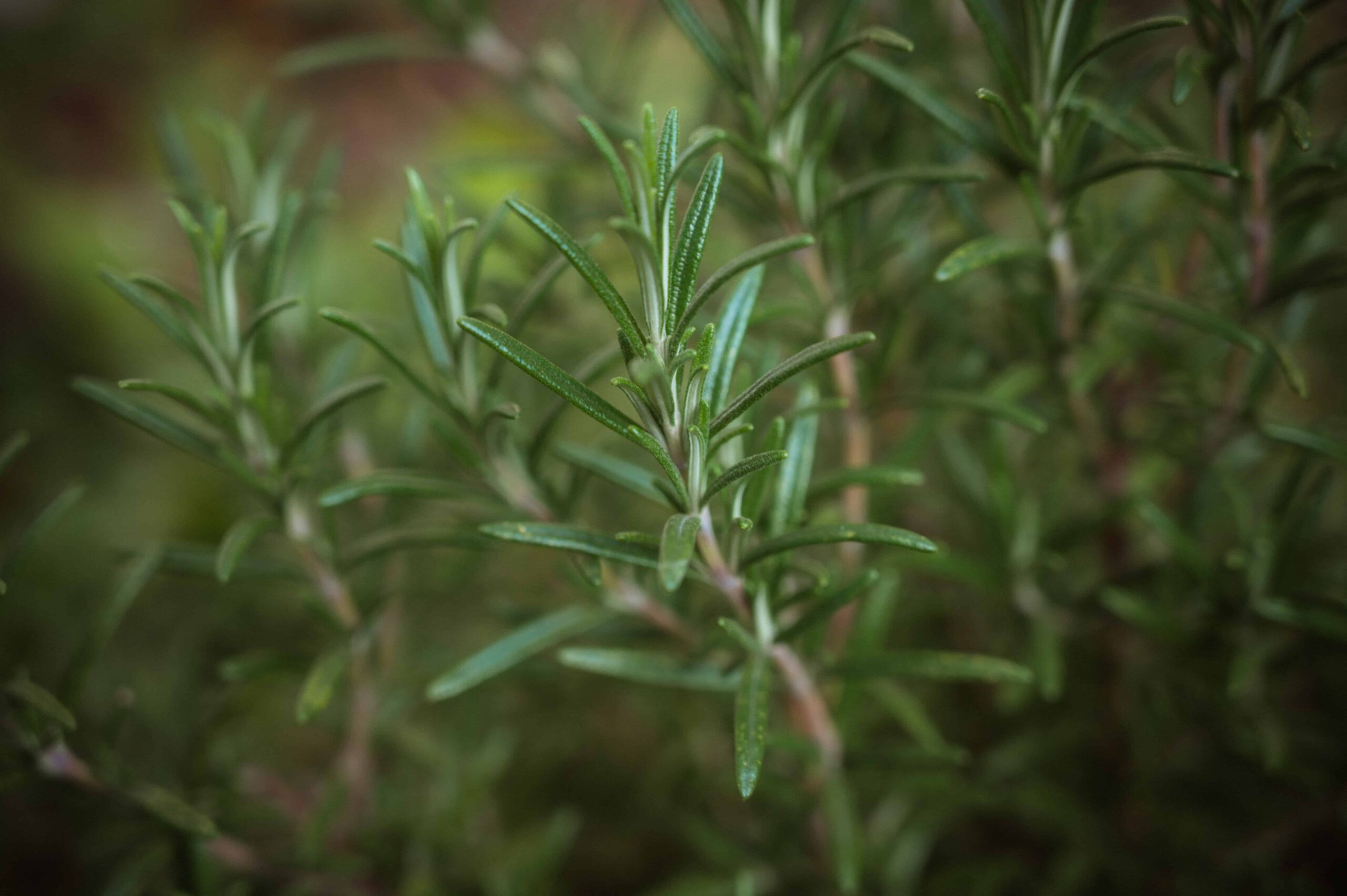
Growing Rosemary Outdoors
Once you have a great spot for your rosemary, you can begin planting it. It is best to plant in the spring after your last known frost date. Since rosemary can grow large, you should space the plants at least two to three feet apart.
If you are starting your rosemary from seed, again, you should start them indoors. Only plant the seedlings that look the strongest.
The plants will grow slowly at first, but since rosemary is a perennial, it will come back next year, and grow even faster. In moderate climates, it will thrive all year.
To improve the soil that you are growing your rosemary in, you should add some potting soil that is enriched with compost. You can find this at almost any gardening store. Mix this soil with the soil in your garden. You only need to go into the first layer of soil.
Once the rosemary is planted, you should water it well. The soil should be watered uniformly, and you should allow it to dry out before you water it again. To keep the roots moist in the summer, you should lay down mulch. The mulch will also help in the winter to insulate it.
You may also want to consider fertilizing your rosemary plant throughout the year. Choose a plant food/fertilizer that works with both the plants and the soil. Decide if you want to use organic fertilizer.
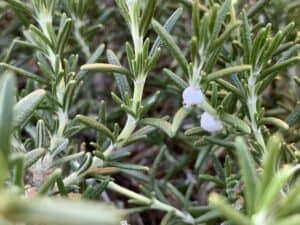
Growing Rosemary in a Container
Just as you can grow rosemary in your garden, you can also grow a rosemary plant in a container. Growing plants in pots will reduce the risk of a pest infestation destroying all of your plants.
The best containers for rosemary are those that have at least one drainage hole, and one that is anywhere from six inches to eight inches deep.
I have large pots in the front of my home. Rosemary thrives in them because they can grow large. You should choose a high-quality potting soil that is well-draining and loose. Make sure that you are choosing a soil that contains a slow-release fertilizer.
If you are reusing your container, sterilize it with a solution of one part bleach with nine parts water. Rinse the pot well, and then make sure it is totally dry before planting your rosemary.
Rosemary requires full sun. So, you should place the container in an area where it will receive full sun.
Preferably, rosemary should get sun in the morning, and then shade later in the day. This is the environment where rosemary thrives.
You also need to water your pot. To repeat, rosemary likes its roots to be moist, but you should always allow the soil at the top to dry.
When watering the rosemary in a pot, add enough water until you see liquid draining from the drainage hole. If the rosemary is sitting on a saucer or drainage dish, you should empty it of water and then place the pot back on it.
Fertilizer in containers
You can fertilize the soil in your pot, too, but only if the soil you chose doesn’t have fertilizer in it.
It is very important that you do not over-fertilize rosemary. This could cause the rosemary to die. If you do fertilize, remember to water the plant after fertilization.
Insects and pests
If you see insects on your rosemary, you should spray them with a stream of water. Aphids are common on rosemary, but you can eliminate them with a good, hard spray. If you still see insects on your plants, mix a solution of a tablespoon of dish soap with a gallon of water. Spray this on the plant. Make sure to rinse the rosemary after it is treated with this soap solution.
I had spit bugs on one of my rosemary plants. It was lucky I caught it early; I had snipped some for cooking several days before, and the plant was fine. When I saw the white globs, I got scissors and a trash bag and snipped away the stems with the spit bug larvae on them.
Then I checked my other rosemary plants to be sure they weren’t affected. (I have rosemary planted in pots that are about 15 feet away from each other and they weren’t affected.) The next day, I went out check all the plants and continued to check daily to be sure the spit bugs were eradicated. (They were!)
Rosemary plant containers inside or outside
If you live in Zone 8 or cooler, you should make sure to bring your rosemary inside to a sunny spot before there is a chance of frost.
If you live in Zone 9 or farther south, generally, you can leave your rosemary pots outdoors all year. Take care to provide them with shade in the afternoon in hot summer months. However, if you get the odd cold weather system coming through, you should bring it inside.
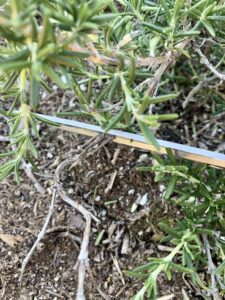
Pruning Rosemary
You’ll likely be naturally pruning your rosemary plants as you snip off sprigs to enjoy for cooking, etc. Therefore, there isn’t a reason to prune unless you see dead stems.
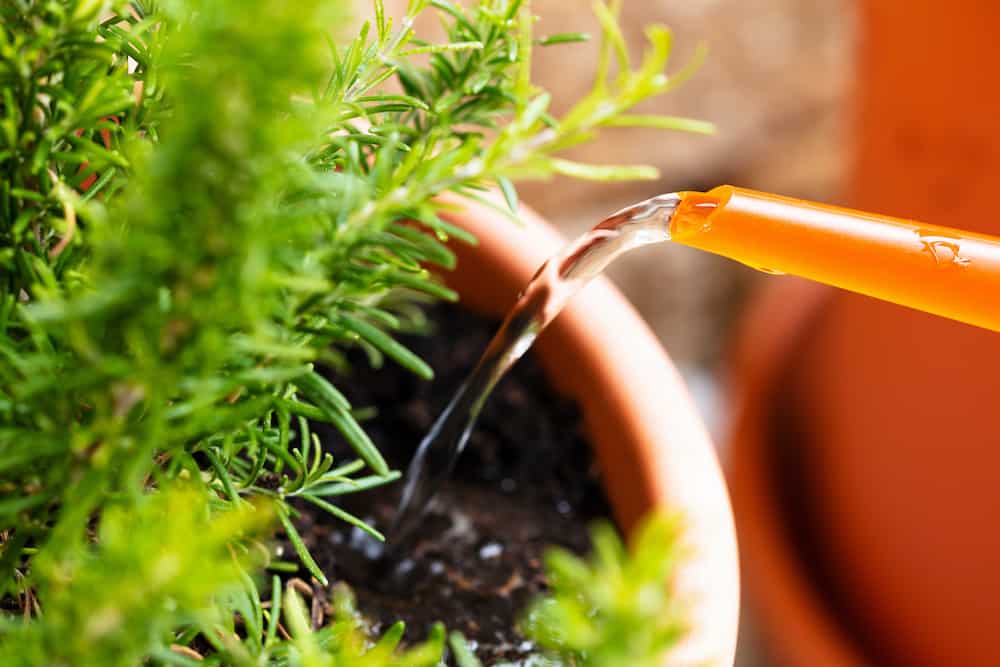
Harvesting and Storing Rosemary
You can harvest your rosemary stems at any time. Simply snip them from the base. If you have several healthy plants, take from each of them instead of cutting away too much from one plant. Rosemary is a versatile herb to use in cooking. The beauty of growing your own plants is you can cut it fresh off the plant whenever you need it.
If you have several plants or an established larger plant, you can also dry it to use in the future. To harvest, simply cut a stem off of the plant.
To dry the rosemary, you can hang it upside down or use a rack. When the stems are dry, you can remove the leaves and use them to flavor your food. To store dried rosemary long term, seal them in glass jars or old spice jars.
You can also freeze the sprigs of rosemary you harvest to make it last longer. Alternatively, you can preserve the rosemary in vinegar, or you can place them in butter or oil to flavor it.
Using Rosemary
Now that you have a bounty of rosemary, you need to use it! Rosemary blends perfectly with several other herbs. It also tastes great when used in veal, pork, or chicken dishes.
People also put rosemary in stew and soup recipes, or you can sprinkle the rosemary on vegetables or use it in sauces. Adding your rosemary to bread recipes is delicious.
When mixed with oil, garlic, and red wine, it makes a delicious marinade, too. Finally, rosemary has a wonderful fragrance, so add it to a bouquet, sachet, wreath, or to your nightly bath.
Things to Consider About Planting Rosemary
Though I hope that you have great luck when planting rosemary, there may be some things to consider.
First, rosemary is susceptible to scale, spider mites, whiteflies, and mealybugs. It can also be susceptible to root rot and powdery mildew. This is especially the case in overly humid areas.
The best thing to do to prevent these diseases is to make sure the soil you use is well-draining.
Another thing to consider about rosemary is that if it gets too cold, the tops of the rosemary plant can die off.
You may need to plant the rosemary around a protected area, like a south-facing wall. You can also cover rosemary to protect it from frost.
Growing Rosemary FAQs
1. Where does rosemary grow best?
Rosemary grows best in areas of full sun and in well-draining soil.
If you don’t have an area of your yard or garden that gets full sun, you can plant the rosemary in a pot and then move it around as needed.
It needs air circulation around the roots, so you don’t want to plant it in soil that has too much clay or soil that is too compacted.
2. Can I grow rosemary indoors?
Now that you know how to grow rosemary outdoors, you might wonder if you can grow it indoors. You can!
In this case, you would be growing the rosemary in a container. So, it is important to follow the guidelines for container growing.
You should place the pot near a sunny window where the plant will get at least six hours of sun. It is best for the plant to get about eight hours of sun, though.
The same water rules apply, and remember, if you plant the rosemary in a pot, it should have at least one drainage hole.
Place a saucer or draining plate under the pot, and then remove the water after it has collected.
3. Why do my rosemary plants keep dying?
There are a number of reasons your rosemary could be dying.
Frost damage to rosemary plant
One common reason is frost damage to rosemary plant.
Though many plants can withstand a frost, rosemary is one that cannot. The leaves will start dying and turning brown.
The center of the plant may survive as long as the temperature doesn’t fall below 20 degrees Fahrenheit. If it does, it can grow more leaves.
Under- or over-watering rosemary
Another reason rosemary might die is that it is watered too much or too little. Remember, it is best to water the plant thoroughly and then allow it to completely dry before you water it again.
If you live in an area with a lot of rain, you should consider mixing sand in with the soil.
Insects and rosemary plants
It is also possible that insects could be killing your rosemary. Whiteflies, aphids, and spittlebugs are commonly found on rosemary.
In small numbers, these plants don’t do too much damage, but if the population grows, it can kill the plant.
Spray these insects off with water, and if you see that isn’t working, consider a soapy water solution.
Rosemary plant in zone 9 or higher
Another reason rosemary plants die is if is too hot. Growing rosemary in areas with hardiness zones of 9 and higher means more water and less sun.
In cases where summers are consistently over 100 degrees F (37.7 degrees C) rosemary plants shouldn’t be in full sun.
Also, in drier climates, you will have to be sure they are getting enough water.
Rosemary plant disease
Finally, disease can be killing off your rosemary plants. Crown and root rot can develop if the plant is watered too much or if the soil is too heavy.
Again, consider adding sand to the soil if this is the case.
Another disease to watch out for is powdery mildew. You will see the leaves turning white before turning yellow and dying.
You can combat this by planting your rosemary in areas where they get a lot of sunlight and full circulation.
4. What is scientific name for rosemary?
Rosemary is in the Lamiaceae family. It’s scientific name is Salvia rosmarinus. It was called Rosmarinus officinalis until recently.
Growing Rosemary Plant
If you are someone who enjoys using real ingredients in dishes, the next step you can do to level up your cooking skills is venturing into growing your own herbs.
Growing your own rosemary plant allows you access to ample supply of this delicious and aromatic herb, opening the gateway to even more exciting dishes.

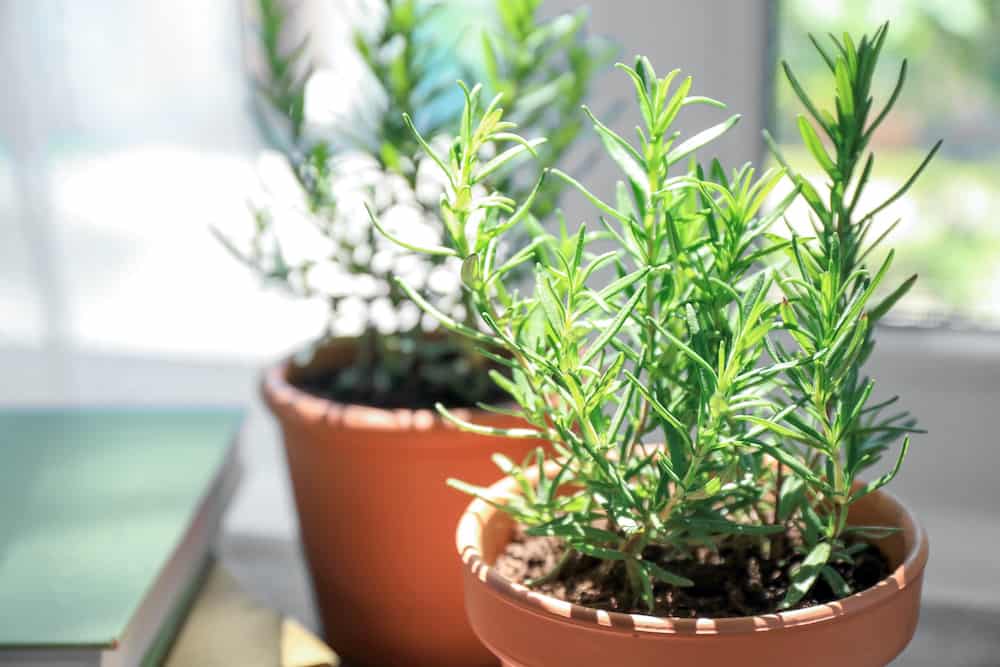
I am starting to grow rosemary from a seedling. Do I have to root it or stick it in the grown?
Very in informative article.
Rosemary is difficult to germinate. Therefore, it’s important to grow rosemary in as ideal conditions as possible. This includes having enough light and warmth. You may want to consider a heat mat when they are germinating.
We recommend planting seeds directly in the ground. However, we recommend pots instead of directly in the garden. This is so you can have more control over their environment.
It’s easier to cover pots to keep them warm outdoors or bring them indoors if the pots are small enough. You can also plant seeds in pots and keep them inside your home with the goal of transplanting them outdoors after the last frost.